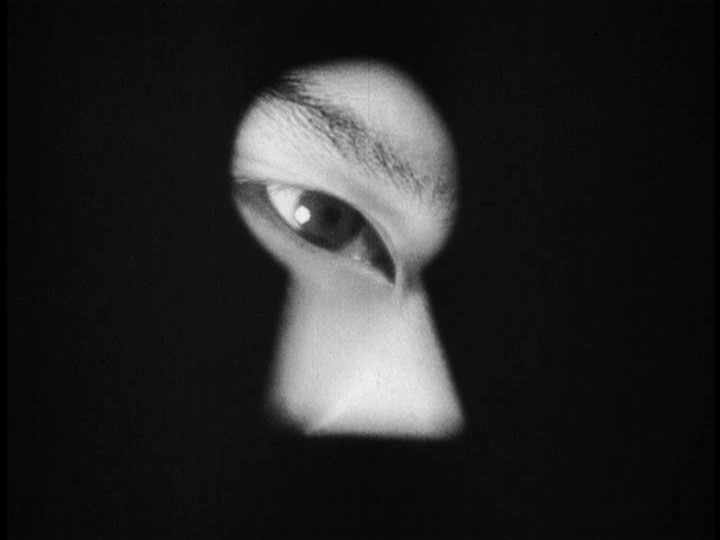Jean Cocteau's Le Sang d'un Poete (Blood of a Poet), by Jared Caldwell
Jean Cocteau's “Blood of a Poet” is a film in the Surrealist vein. Some may argue that Cocteau was not part of the surrealist movement, therefore “Blood of a Poet” is more aligned with German Expressionism, yet there are so many undeniable similarities to Surrealism that one cannot ignore the influence of Surrealism in this work.
"'Thought expressed in the absence of any control exerted by reason, and outside all moral an aesthetic considerations.'" In “The Blood of a Poet”, Cocteau creates a sexual tension that is maintained throughout the film. When the artists is first introduced, he is shirtless, and is drawing some sort of androgynous form onto his easel. The shirtless man does not fit the stereotype of a disshoveled struggling artist; he is a masculine, fit, and confident-looking man. The appearance of the main character is just the beginning of sexuality in the film. After smudging out the mouth of the picture he drew, the hand appears alive on his hand, speaking to him. Soon after, the artist receives pleasure from the mouth, first with his own lips, his chest, and then the sexual foreplay escalates from there. The genderless mouth is then placed onto a nearby statue, bringing the statue to life. Not only are sexual boundaries explored, gender lines are also blurred. The statue, the artists drawing, and the painting in one of the rooms in the mansion all seem to have characteristics of both sexes. Even an angel, a male figure with feminine characteristics, makes slight homoerotic gestures towards a dead boy. These sexual themes are evident in nearly every scene of the film.
In the Surrealist fashion, Cocteau tampers with reality and fantasy to break “the shackles of logic and reason”. The mirror the artist encounters acts as a “barrier” between his world and this outer fantasy world he encounters. After going “into” the mirror, Cocteau changes what would be considered “reality” in the film. Even gravity is in a different direction on the other side of the mirror. When the artist “peeps” through the keyhole of the different rooms in the mansion, he is presented with these bizarre scenes on the other side of the door. In one room, a girl is levitating; in another room, an androgynous painting starts to come to life. After viewing all the rooms, the artists is persuaded to commit some sort of imaginary suicide. The logical progression in the film is skewed from the reality outside of the film.
The Dada love affair with the machine and the inanimate are countered with the “fear of the dehumanizing automaton”. As the artist is drawing in the beginning, the erased mouth becomes alive on his hand, and then the hand breathes life into the statue when the mouth becomes fixed as the living statues mouth. Other objects such as light fixtures, statues, other portraits gain different degrees of personification. These animated characters are a direct influence on the main character, coaxing him into alternate realities and even a pseudo-dream suicide.
Cocteau's “Blood of a Poet” is a surrealist film that deals with metaphysical and fantastical elements. The sexual innuendo and violent context of the film bring about an appropriately dark feel and mood onto the work. The surrealist notion of coming back to “art” after the Dada movement is prevalent in the film, thus giving “Blood of a Poet” if not a surrealist title, than at the very least a surrealist spirit.


1 comment:
Thank you for putting this information up on your site> i am curious to know more about Cocteu's use of opium and its relations to his surrealist expression. Which films is this aspect of his life most present?
The Curator
Post a Comment